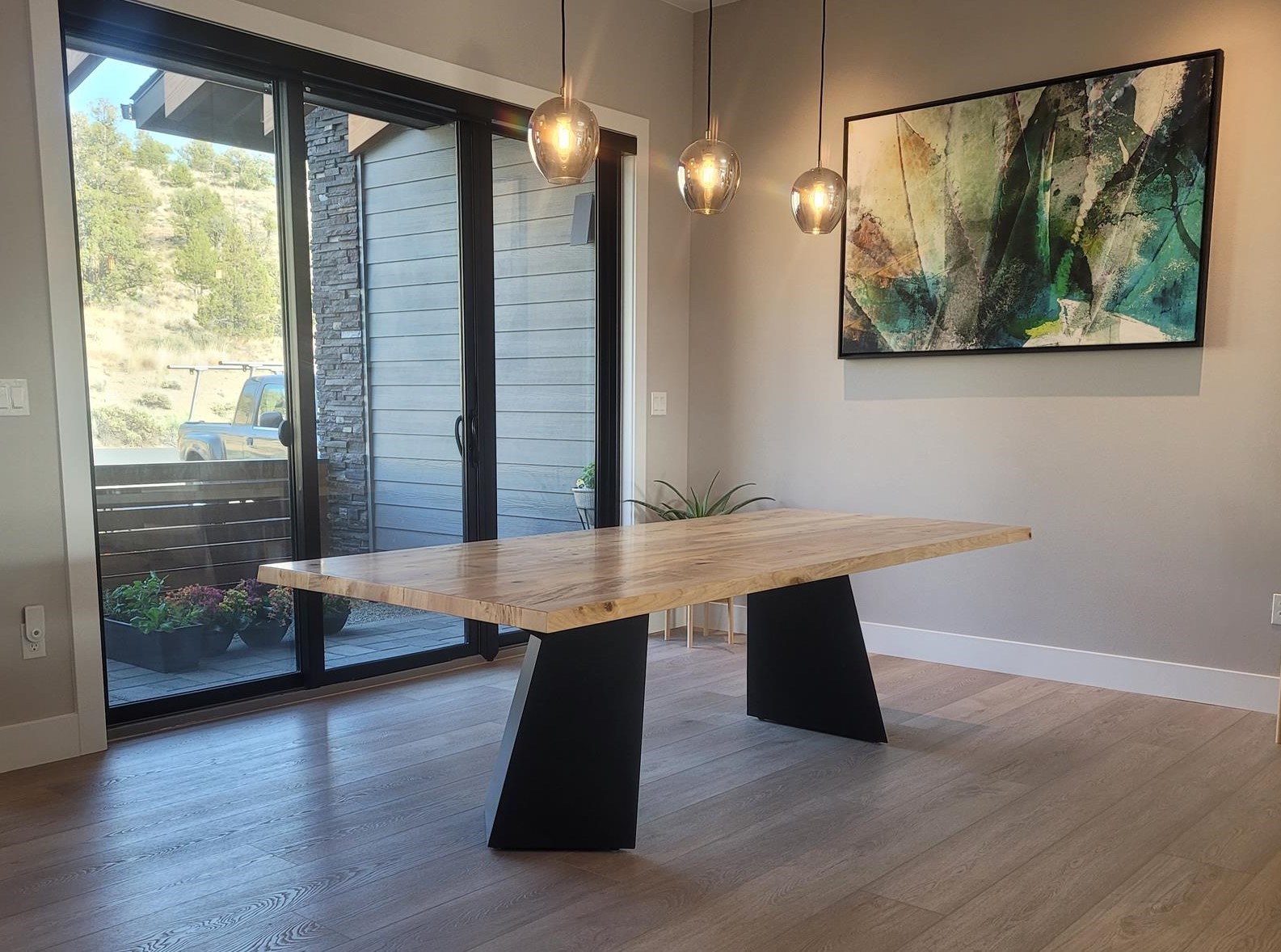Dining Room Table Legs That Integrate Performance and Modern Design
Dining Room Table Legs That Integrate Performance and Modern Design
Blog Article
A Detailed Appearance at Table Leg Styles: Discovering the Ideal Suit
Picking the ideal table leg style is crucial for both visual charm and useful functionality. Typical 4 legs provide timeless style and security, while the pedestal base gives boosted legroom and a modern appearance. For those with larger tables, trestle legs ensure tough assistance, whereas hairpin legs present a mid-century contemporary ambiance with their minimal design. The x-shaped legs mix contemporary design with improved security. Each of these choices brings unique advantages, making the choice extra than just an issue of preference. Discover additionally to discover which design perfectly matches your dining room and lifestyle.
Standard Four Legs
Amongst the different kinds of dining table leg styles, the conventional four-leg style remains a timeless selection for numerous families. Four legs supply well balanced support, making certain the table continues to be steady and capable of bearing significant weight (dining room table legs).
From an aesthetic perspective, the standard four-leg layout can be conveniently adapted to different interior styles. Whether crafted from timber, steel, or a combination of materials, these legs can be delicately carved, sleek and minimalistic, or anything in between. Their flexibility permits them to match both rustic and contemporary settings flawlessly.
Furthermore, the simple structure of the four-leg design promotes convenience of activity and positioning within an area. Unlike more complex bases, this style minimizes obstructions, providing adequate legroom for diners. In summary, the conventional four-leg eating table leg style marries enduring beauty with functional performance, making it an astute choice for those looking for both form and feature in their dining furniture.
Stand Base
Commonly celebrated for its elegant and space-efficient style, the pedestal base is a recognized option to the traditional four-leg configuration in table leg designs. This distinct base generally includes a solitary main column sustaining the table top, which can differ in type, from ornately sculpted timber to smooth, contemporary steel. Among the main benefits of the pedestal base is its ability to make best use of legroom and seating flexibility. Without corner legs, restaurants are afforded greater liberty of motion, making it a perfect choice for round and oblong tables that promote more intimate and comprehensive gatherings.
Additionally, the stand base's main assistance can handle substantial weight, enabling making use of much heavier table tops, such as marble or thick wood. This strength combined with its aesthetic adaptability makes the stand base a popular selection in both standard and modern interior setups. It can flawlessly integrate with numerous layout styles, from traditional beauty to minimal modernity. Furthermore, the central column itself uses a canvas for complex styles and artistic expressions, adding a component of aesthetic rate of click for source interest underneath the table. In recap, the stand base incorporates performance snappy, making it an improved and useful option for diverse eating environments.
Trestle Legs
Trestle legs supply a durable and ageless structure for eating tables, defined by their horizontal cross-bracing and tough support beam of lights. Stemming from middle ages times, this layout has advanced yet maintained its necessary structure, making it a seasonal favorite in both standard and contemporary setups. The central trestle beam, usually supported by my site 2 or more upright posts, uses extraordinary security, permitting bigger table lengths without the need for extra legs.
A significant advantage of trestle leg tables is the sufficient legroom they offer. Unlike tables with 4 edge legs, the absence of blockages at the table's sides offers unobstructed room for chairs and diners, improving convenience and availability. This makes trestle tables ideal for fitting bigger gatherings, whether in a dining-room or a reception hall.
From rustic farmhouse to sleek contemporary styles, trestle legs can be personalized to fit private tastes. Their enduring charm and practical benefits make trestle legs a compelling selection for those seeking both style and practicality in their dining table.
Hairpin Legs

The charm of barrette legs hinges on their simplicity and convenience - dining room table legs. Available in a variety of products, including steel and brass, they can be completed in countless colors to complement various indoor designs. Whether matched with a rustic wood table top or a modern glass surface, hairpin legs easily mix performance with a touch of classic beauty
Resilience is one more significant function of hairpin legs. In spite of their fragile look, these legs are engineered to bear significant weight, making sure the eating table continues to be stable and safe. Furthermore, they are fairly easy to install, making them a preferred choice for DIY enthusiasts and professional furniture manufacturers alike.
X-Shaped Legs

Constructed from materials such as steel, timber, or a mix of both, X-shaped legs can be customized to match numerous design preferences. Steel legs usually offer a smooth and commercial feeling, perfect for loft-style houses and modern eating areas. On the various other hand, wood X-shaped legs supply a warmer, a lot published here more rustic allure, appropriate for farmhouse or eclectic insides. The flexibility in products enables property owners to personalize their dining tables to better fit their total layout scheme.
In addition, the design behind X-shaped legs ensures also weight distribution, reducing the threat of wobbling and boosting longevity. This makes them particularly well-suited for bigger table that require additional support. Basically, X-shaped legs blend practical design with modern-day visual appeals, making them a classic selection for varied dining settings.
Verdict
An extensive understanding of eating table leg designs discloses the distinctive features and advantages of each design. Conventional four legs use stability and classic charm, while pedestal bases provide legroom and a streamlined appearance. Trestle legs ensure robust assistance for bigger tables, and barrette legs introduce a mid-century modern visual. X-shaped legs combine contemporary layout with improved security. Selecting the appropriate leg design guarantees both functional and visual contentment in any dining space.
Report this page